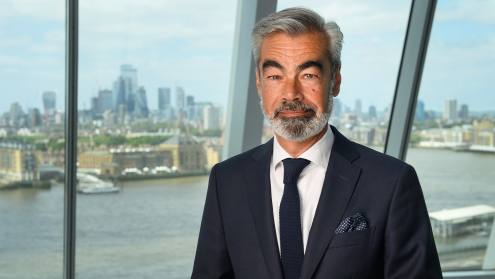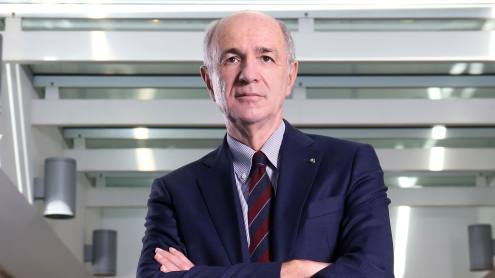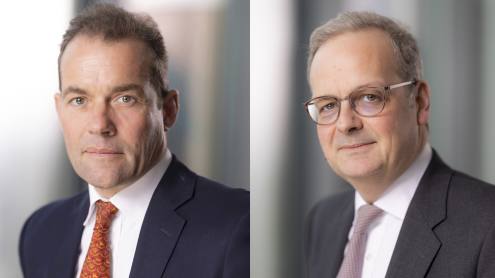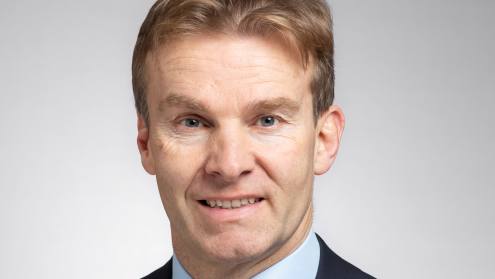In April 2023, Swedish bank SEB and French lender Crédit Agricole Corporate and Investment Bank (CIB) launched ‘so|bond’, a “sustainable and open” digital bond platform. The platform is underpinned by blockchain technology, with a mechanism to encourage participants to lower their environmental footprint.
While blockchain has been widely deployed in the financial sector in recent years, perceptions of the high-energy consumption underpinning the technology have restrained adoption. SEB and Crédit Agricole CIB’s platform aims to address this, while broadening market access to digital finance.
Career history: Anna Sjulander
2022 Head of sovereigns, supranationals and agencies origination, SEB
2020 Head of debt management, Swedish National Debt Office (Riksgälden)
2017 Head of funding, Riksgälden
2012 Deputy head of funding, Riksgälden
2011 Funding manager, Riksgälden
“There has been progress in lowering energy consumption, but we have what we call a ‘proof of climate awareness model’ that will add another layer,” says Anna Sjulander, SEB’s head of sovereigns, supranationals and agencies (SSA) debt capital markets. “It will leverage competition to value investment on this sustainable IT infrastructure and improve transparency around energy consumption.”
The technology is a modified version of Ethereum, adapting its Clique ‘proof-of-authority’ consensus model to ‘proof-of-climate-awareness’ (PoCR). It engages a series of nodes — computers running PoCR software — to form the blockchain network.
Blockchain benefits
With such a new platform, some market participants are wondering what is in it for them, Ms Sjulander says. She highlights the automatic processes that make it easier to access the market, as well as the need for fewer intermediaries.
“The decentralised aspects of blockchain support increased security and transparency for all the parties involved,” says Ms Sjulander. “Intermediaries, issuers and investors can capture benefits across capital markets. You will have faster access to the market and real-time information, combined with an automated process that might increase the velocity of funding events, for example clearing and settlement. In the long run, we expect participants to be able to transact with fewer intermediaries involved and lower the barriers to entry — with the aim of improving liquidity.”
The platform allows a vetted set of node and node operators to create blocks. The node operators — currently SEB and Crédit Agricole — are rewarded by the creation by a native token, the so-called Climate Awareness Coin. The lower their environmental footprint, the more coins they are awarded.
An independent authorised party will audit the operators to assess each node’s environmental footprint, following an ISO standard lifecycle assessment, an internationally standardised methodology for measuring environmental impact and benefits. The transparency of the system is expected to be an incentive for participants to compete against each other to get as low a footprint score as possible.
The decentralised aspects of blockchain support increased security and transparency for all the parties involved
While SEB and Crédit Agricole are currently working with an unnamed, high-rated issuer, a regular capital markets borrower, the nature of the platform means that it can be joined by a wide range of issuers. If the network grows beyond the initial transaction, these coins could gain in value; at the moment, with only two participants, they are most useful in tracking the environmental footprint of the issuers and their partners. The typical node operator is expected to be a market participant, such as custodians and other financial institutions, but could be expanded to other sectors in the future, such as energy companies.
“The next step that we’ll look into is what kind of interest there might be for joining the platform as an intermediary like ourselves and Crédit Agricole, and other issuers and other assets,” says Ms Sjulander. “We hope that going forward this kind of platform will attract issuers from other segments and the corporate space, whether investment grade or other ratings classes. It’s something we’ll investigate as soon as we are live. It’s open for all.”
Digital bonds
For the time being, the priority is not bringing other financial instruments onto the platform, but scaling the learning curve in the digital bond space. Ms Sjulander says that the digital bond resembles a conventional bond “to a high degree”, which allows the participants to learn more about blockchain technology, as well as the legal and regulatory aspects of issuing a digital bond. She emphasises that the project is at an early stage, so there are very few reference points to work with and it is too soon to benchmark.
While the platform itself is a fledgling initiative, Ms Sjulander says that clear data and the use of reliable external parties for monitoring and auditing are essential for market participants to both setting and meeting climate targets — and avoiding greenwashing. Sustainable finance has been subjected to more scrutiny in recent years and participants need to be clear about their goals, just as investors need to be sure that results are being monitored and delivered.
“Our focus is working with our clients to disclose and quantify the environmental and/or social impact of their investments, and have that verified by a credible third party,” she says. “This is of critical importance if we are to avoid concerns like greenwashing. As the market develops to include sustainability-linked financing, we are spending increasing amounts of time with our clients to ensure they set key performance indicators that are material and that there is sufficient data to ensure that their progress is reportable.”
Sustainable platform
SEB is developing new structures to allow issuers and investors to better understand risks and opportunities related to green and sustainable financing. Ms Sjulander highlights those related to water and “natural capital” more broadly.
“We’ve heard recently at the UN Water Conference [in March 2023] that there’s a huge financing gap if we’re to meet Sustainable Development Goal 6, that is access to water and sanitation for all,” she says. “So, we’re looking to scale financing to address the issue, while working with investors to better identify risks and highlight opportunities in this area.”
The sustainable nature of the bond platform fits SEB’s heritage — Ms Sjulander says that the bank has played a leading role in the development of sustainable capital markets and developed the green bond concept in 2007/08 together with the World Bank. Its ambition is to be “a leading catalyst in the transition to a more sustainable world”.
we can increase distribution in other currencies other than the Nordic currencies, where we are very, very strong
SEB is one of only two commercial banks — and the only Nordic bank — on the EU Platform on Sustainable Finance, where the bank aims to transmit its experience to help shape best market practice. SEB’s head of sustainability strategy and policy, Karl-Oskar Olming, was appointed to a second term as a member of the expert group in February 2023.
The platform was established in 2020, bringing together sustainability experts from a range of financial institutions and business sectors, non-governmental organisations and civil society, as well as think-tanks and academia. It has the aim of advising the European Commission on an EU-wide classification system for sustainable activities, and more broadly supporting the delivery of the European Green Deal.
Expanding footprint
SEB’s ambition is to be “a leading CIB in northern Europe”. In the past few decades, it has expanded beyond its Nordic heartland into Germany and the UK, and is modestly expanding in Austria, Switzerland and the Netherlands. The lender is present in more than 20 countries and has around 16,500 employees. In Denmark, Finland, Norway, Germany and the UK, it focuses on corporate and investment banking. As of end-March 2023, the group had total assets of SKr3.8tn ($350bn) and assets under management of SKr2.2tn.
In the case of the SSA business, the bank aims to diversify beyond its traditional focus on Nordic currencies. The bank has been hiring and training teams in fixed income, among other areas, in order to drive its expansion.
“My colleagues in other segments are already involved in other currencies,” Ms Sjulander says. “SSA is also expanding into those areas because a lot of issuance from sovereigns and supras, as well as across sustainable bonds, is in euros. We have clients based all over the world. We have the value chain in place, we can increase distribution in other currencies other than the Nordic currencies, where we are very, very strong.”
In the recent turbulent years, SEB’s SSA business has continued to tick over without the disruption seen elsewhere. Scandinavian sovereign issuers have high ratings and sell bonds via regular auctions, lowering the execution risk that some jurisdictions see.
“For the SSA segment and the clients within our universe, the market hasn’t changed that much,” says Ms Sjulander. “The investors know that they will be there on a continuous basis. These issuers have a yearly funding plan, and are active in different currencies and tenors. We give them advice as a partner, to see where we have investors in different currencies for them to lower the cost of funding and cover their needs in the most appropriate way.”
Ms Sjulander, perhaps unusually for a banker, has a background in the public sector, having previously been head of debt management at the Swedish National Debt Office. Coming from a more hierarchical, process-oriented world, she has found relationship-building across SEB to build value in the organisation a refreshing approach.
“I know the public sector issuance by heart, but you should always learn new things,” she says. “Education and knowledge is what drives me.”







